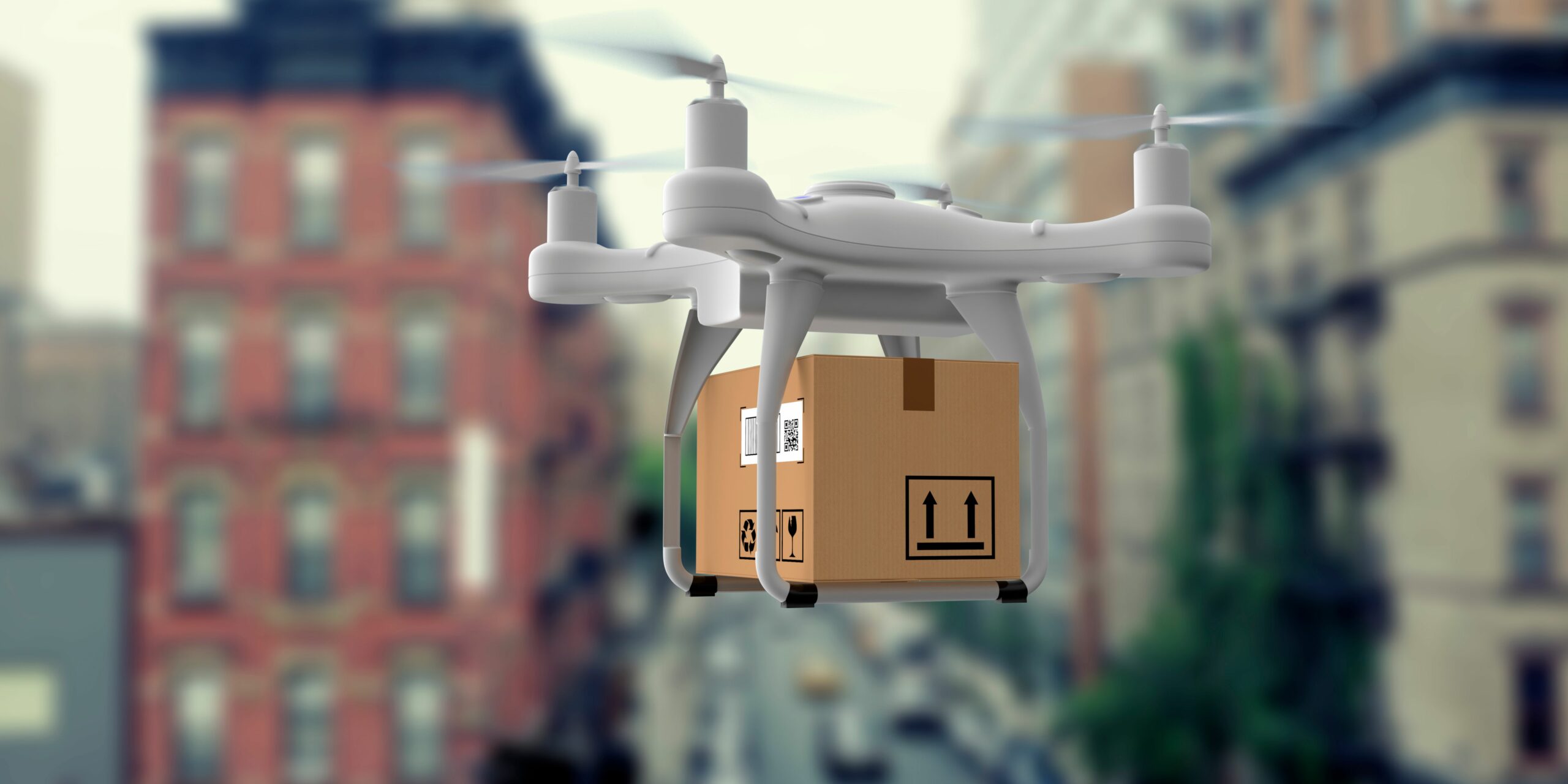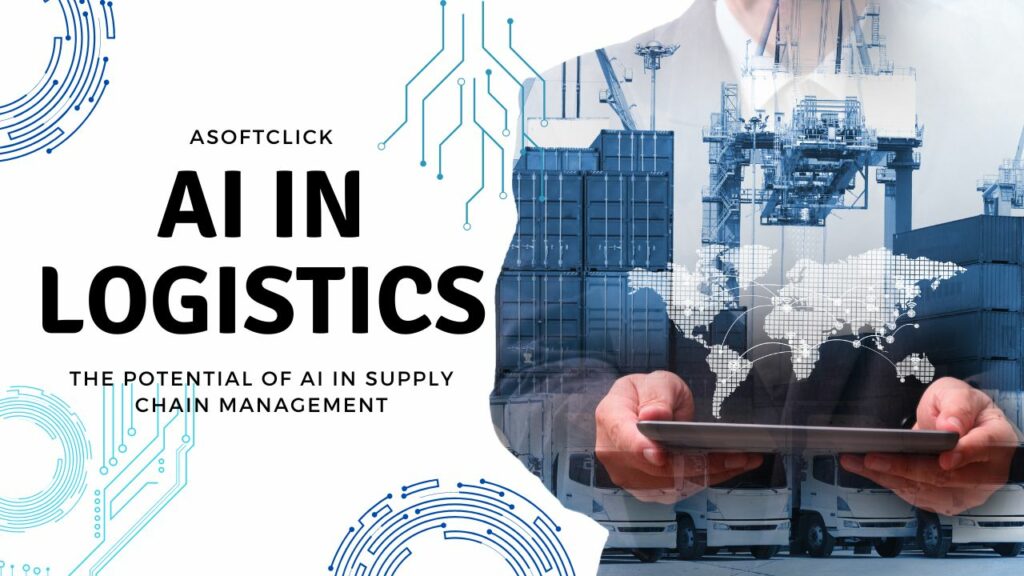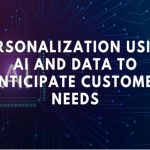 Analytics based on artificial intelligence and data are gaining popularity. The outcomes of supply chain market AI solutions are better inventory management, intelligent manufacturing, dynamic logistical systems, and real-time delivery controls. In addition, the primary goal of employing AI in Logistics in the supply chain is to boost productivity and efficiency. Below, we’ll discuss how and where artificial intelligence can affect supply chain management.
Analytics based on artificial intelligence and data are gaining popularity. The outcomes of supply chain market AI solutions are better inventory management, intelligent manufacturing, dynamic logistical systems, and real-time delivery controls. In addition, the primary goal of employing AI in Logistics in the supply chain is to boost productivity and efficiency. Below, we’ll discuss how and where artificial intelligence can affect supply chain management.
Although the movement of goods is at the heart of logistics, its effects go much further. The very nature of business is exchanging products or services for cash or other forms of trade. The route those products and services take to complete the transactions is known as logistics.
Common supply chain problems and AI solutions
Undoubtedly, AI has a place in supply chains and logistics. But it would be a fault to say that the road to AI domination is smooth and easy. Organizations are exploring intelligent technologies as a result of increased shipper needs. The following are a few of the most common supply chain solutions offered by the AI technology:
- Determining the potential effects of supply disruptions, changes in demand, or deviations from the plan
- Using AI-driven data analytics to predict consumer demand, which enables more effective warehouse management
- Optimizing routes based on traffic and weather data to save time, fuel, and money
- Automating administrative processes like document filing frees staff to work on other initiatives.
- Saving money using completely automated, dynamic should-cost models that react to changes in the market immediately
- Advanced image identification that assesses the state of goods and production methods
Also read: The Rise of Intelligent Automation: The Future of Work with AI
Efficiency and financial drivers for AI in logistics
Several reports claim that by 2030, artificial intelligence will contribute to creating a modern logistics paradigm. AI technologies monitor carrier contracts and negotiate freight and procurement rates. They also pinpoint which processes in a supply chain need improvement to increase profits.
Demand forecasting has become simpler because to AI’s predictive capabilities. Businesses lose money when inventory is out of sync with demand. AI has certainly increased the effectiveness of network planning and demand planning, allowing merchandisers to be more proactive.
It is possible to create self-driving supply chains utilizing cognitive automation. This is comparable to robotic process automation but often works with unstructured data. Although there are conventional robots that can complete the task, the logistics sector relies further on AI-driven robots. Intelligent machines will also help evolve learning tasks while readily adopting complex behaviors. Above all, as robots govern the systems, it becomes more successful and predictable.
How AI is successfully being applied in supply chain management

The pandemic and the ensuing disruptions have shown uncertainties’ tremendous impact on supply chains and highlighted the necessity for clever contingency planning to assist businesses in adequately handling these uncertainties. AI in supply chains can provide the full optimization capabilities necessary for better demand forecasting, more precise capacity planning, more efficiency, cheaper supply chain costs, and higher output, all while promoting safer working conditions.
By employing cognitive predictions and suggestions for the best course of action, AI-driven supply chain optimization software magnifies crucial decisions. The effectiveness of the supply chain as a whole may be improved. In terms of time, expense, and income, it also reveals potential ramifications across numerous scenarios.
You might also like: AI in Human Resource Management: Enhancing the Recruitment Process
Logistics Planning
In hopes of moving items more effectively, artificial intelligence has long been employed in logistics planning. AI can assist in sorting through this data to discover patterns and trends that can improve the flow of commodities. AI can also aid demand forecasting and inventory planning, reducing waste and preventing stockouts.
Demand Forecasting
The primary benefit of employing AI in logistics planning is that it can consider a range of elements that may affect demands. Such as climate, news events, and social networking site trends. The role of AI in demand forecasting projects to increase in the future. Data availability will increase, allowing AI to consider more variables and improve accuracy. Furthermore, as AI improves at demand prediction, businesses can utilize it to make more business strategies about their logistics, including where to construct additional warehouses or which sea routes to use.
Supply Planning
AI aims to manage a lean and efficient organization with the least resources possible. The organization must invest in hardware and software to gather and store data to employ AI for visibility into the supply chain and management logistic planning. The development of demand projection models is possible using this data.
Automated warehouses
A productive warehouse automation is vital to the supply chain. AI-based automation can help with the prompt warehouse retrieval of an item and guarantee a smooth delivery to the consumer. Additionally, AI systems can expeditiously and accurately resolve several warehouse-related problems, streamline complex processes and speed up labor. AI-driven automation initiatives can drastically cut warehouse employees’ demands and expenses and save significant time.
Route optimization
When determining routes, AI can consider various factors, including construction, weather, and traffic. It is also capable of continuously revising routes as circumstances alter. This contrasts with conventional route planning techniques, which are frequently static and need to consider current conditions. Logistics organizations can make time and money savings via AI-based route optimization. By speeding up delivery, it can also improve customer service.
Damage detection/Visual Inspection
Automated warehousing is quickly utilizing artificial intelligence for visual inspection and damage detection. AI has much to offer regarding efficiency, accuracy, and speed. Using AI-based visual inspection, faulty objects on a conveyor belt may be quickly and precisely recognized. This can avoid potential safety issues while also saving a significant amount of time and money. Before a product is out for clients, AI detects defects in it. This may raise customer satisfaction and reduce re-ordering.
Predictive maintenance
There will be Various devices and sensors in automated warehouses, which all transport and store inventory. Preventive maintenance uses data from sensors and machinery to analyze possible issues and suggest fixes before they result in downtime. In addition to keeping the warehouse operating more effectively, this can help save money on maintenance and downtime.
Autonomous Things
The use of artificial intelligence in transportation can be very advantageous. AI enables the introduction of self-driving cars, which will assist in meeting the demands of the supply chain. It will also help in reducing transportation expenses.
Self-driving vehicles

Transportation companies increasingly rely on autonomous vehicles to cut costs and boost efficiency. With the ability to be programmed to take the shortest route, self-driving cars can operate continuously without the need for breaks. Although this technology is still in its early phases, it has the potential to completely transform the shipping sector by making it more dependable, faster, and less expensive.
Delivery drones

To speed up and automate shipment, AI takes part in delivery drones. Artificial intelligence allows delivery drones to travel more precisely and effectively to their destination, avoid obstructions, and choose the most efficient path. To avoid collisions, they can also communicate with one another. Reduced shipping costs and quicker, more dependable shipping times may result. AI can monitor and track shipping cargo to ensure it arrives on schedule and in good condition.
Dynamic Pricing

Dynamic pricing is a popular pricing technique considering the continually fluctuating cost of shipping products. The real-time processing of a large amount of data is necessary for the sophisticated dynamic pricing procedure. AI can quickly analyze large amounts of data and forecast future costs.
Back office
Back-office duties are a part of every business unit, and logistics are no exception. What does the supply chain back office do?
The back office refers to business operations and divisions that do not interact directly with customers. The back office includes everything from IT and accounting to logistics, purchasing, supply chain logistics management, HR, and administration.
By automating the auditing process, validating documents, and simplifying data, artificial intelligence can enhance back office procedures. Many document-related apps are rapidly adopting AI, making these operations faster, more efficient, and safer.
Automating document processing
You may save time on data input, increase productivity, and free up resources to concentrate on innovation and customer care by automating the processing of documents using AI technology.
Automating other manual office tasks
Hyperautomation, also known as intelligent automation of business procedures, is the end-to-end automation of processes utilizing a combination of robotic process automation, prescriptive analytics, and other technologies. This technology automates time-consuming functions for a quicker and more efficient outcome, such as scheduling and monitoring deliveries, providing regular reports, and processing emails.
Customer service chatbot
Since customers may contact businesses with any delivery-related issues, customer support is essential for logistics businesses. With the aid of AI, you may program automated customer service replies, ideally with immediate responses. Customer service has changed forever because of chatbots driven by AI. They can handle low- to medium-level call center operations like making delivery requests, editing orders, tracking shipments, and answering frequently asked questions.
Sales & marketing
AI assists marketers in improving customer experiences and customer understanding. With the use of AI-powered marketing, marketers can develop a prospective customer analysis and construct consumer experiences that are more individualized and targeted, which significantly improves return on investment (ROI) for each customer encounter.
Lead scoring
Lead scoring enables sales representatives to concentrate on the correct prospects. With sophisticated algorithms, AI can anticipate which combination of important lead behaviors and traits will indicate leads most likely to be sales-ready. AI delivers predictive lead scoring with the capacity to evaluate enormous lead-scoring data sets in seconds. Leads can be automatically assigned scores based on their profiles, conduct, and interests using AI-powered tools.
Routine marketing
Logistics service companies can employ AI to automate clerical marketing duties like article generation and email marketing. AI applications are used in marketing to make automated judgments based on data gathering, data analysis, and further observations of demographic or economic trends that may impact marketing activities. AI is widely used in digital marketing initiatives when speed is crucial.
Sales and marketing analytics
AI in marketing is a tactic that uses data and machine learning to create campaigns that contribute to a brand’s objectives becoming more successful. Most marketers use AI for data science, real-time campaign analysis, and market research. Analytics for sales and marketing that use AI can be more accurate. With predictive analytics and customer behavior analysis, logistics companies may better understand what their clients will likely do next with AI-powered solutions.
FAQs
How artificial intelligence will transform the logistics Industry?
The capacity to optimize networks in terms of distance and time is a feature of artificial intelligence used in logistics and supply chain management. In contrast to human decision-making, this aids in generating revenue through machine learning.
What are some good examples of AI in action in Logistics?
Making things simpler for customers of logistics companies is where artificial intelligence may contribute to creating tailored and unique experiences based on data synthesis, assisting in gauging a better grasp of client demands and needs. Moreover, professionals in Logistics can also benefit from the operational efficiency brought by artificial intelligence. AI can boost workplace productivity in various ways, including information storage, documentation, and statistical analysis.
Finally, AI affects the retail process, helps create personalized online customer experiences, and maintains product availability and stock levels.
How will AI be used in logistics and in commercial transportation?
Organizations may consider factors like fleet scheduled maintenance, vehicle sensors, lousy weather, and fuel prices using AI-driven data analytics. It enables businesses to lower logistics costs by providing drivers with crucial data points that help them move more efficiently.
How can Artificial Intelligence fuel the Logistics Industry?
One of the many sectors that could benefit from artificial intelligence is logistics. Logistics professionals can use artificial intelligence to monitor inventory levels, enhance delivery accuracy, and optimize the flow of supplies and goods. Also, it can estimate how much of a product will need to be present in a place before it will be for sale.
You may also like: How Artificial Intelligence Applications Are Revolutionizing Healthcare





